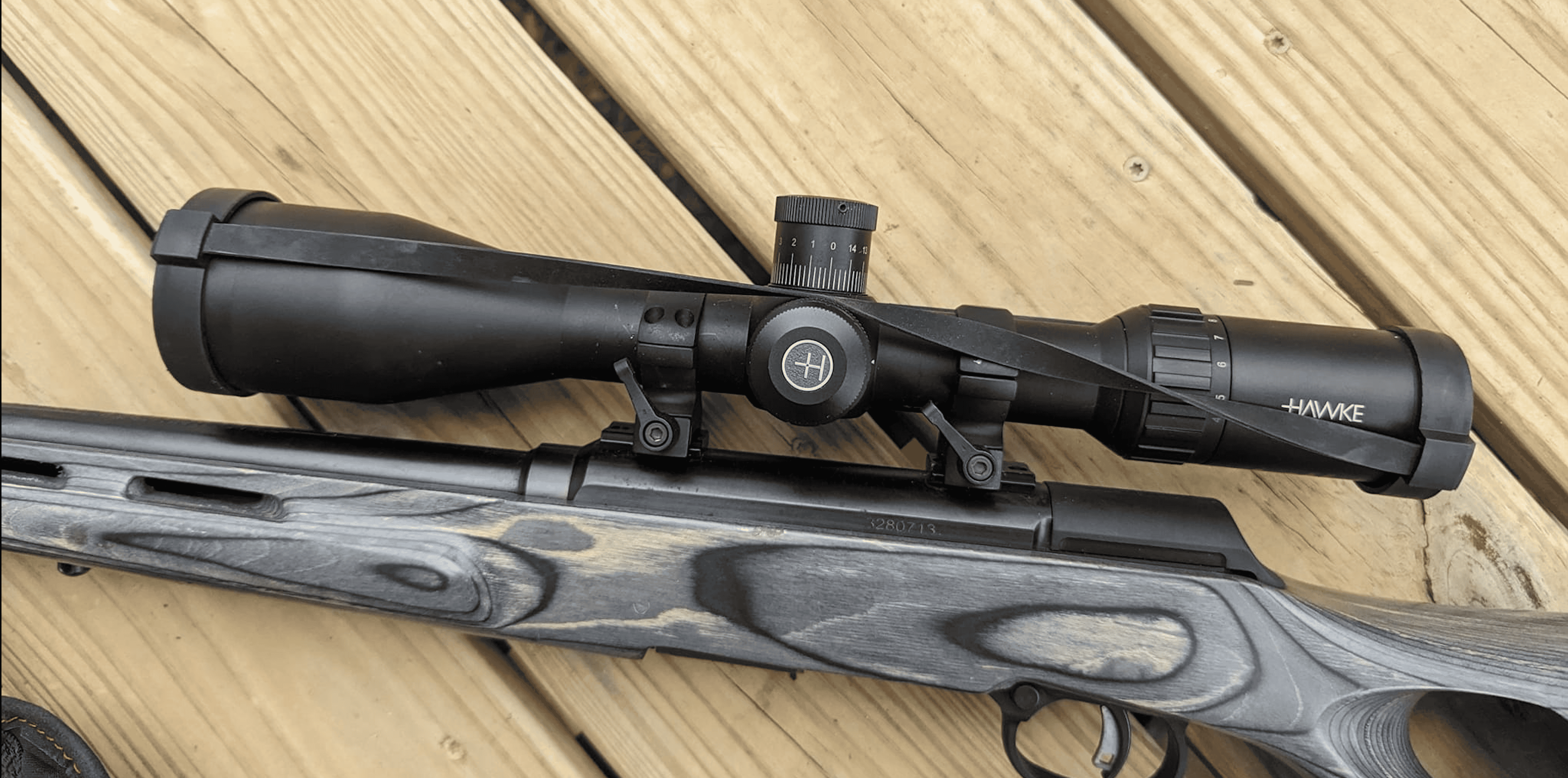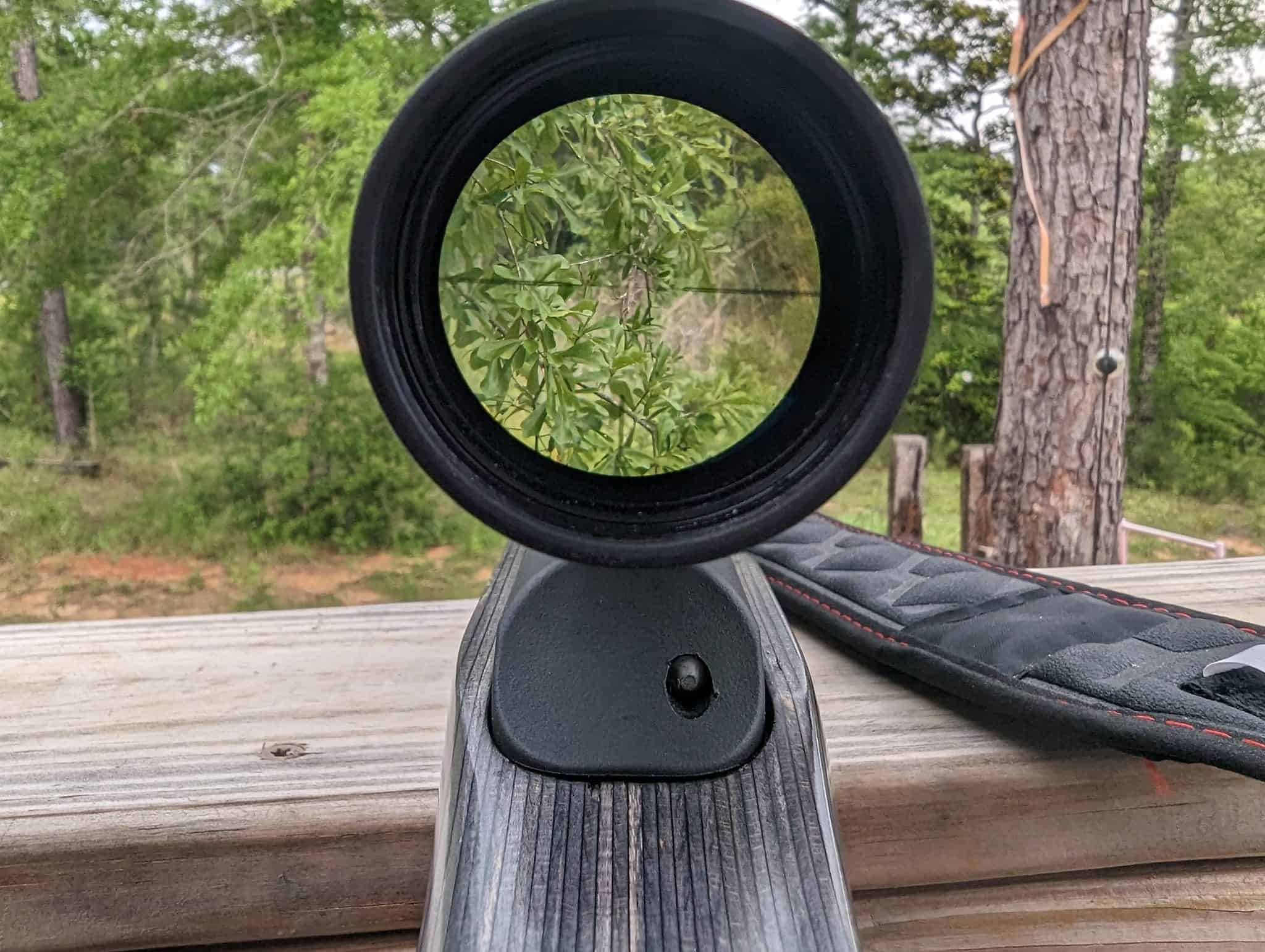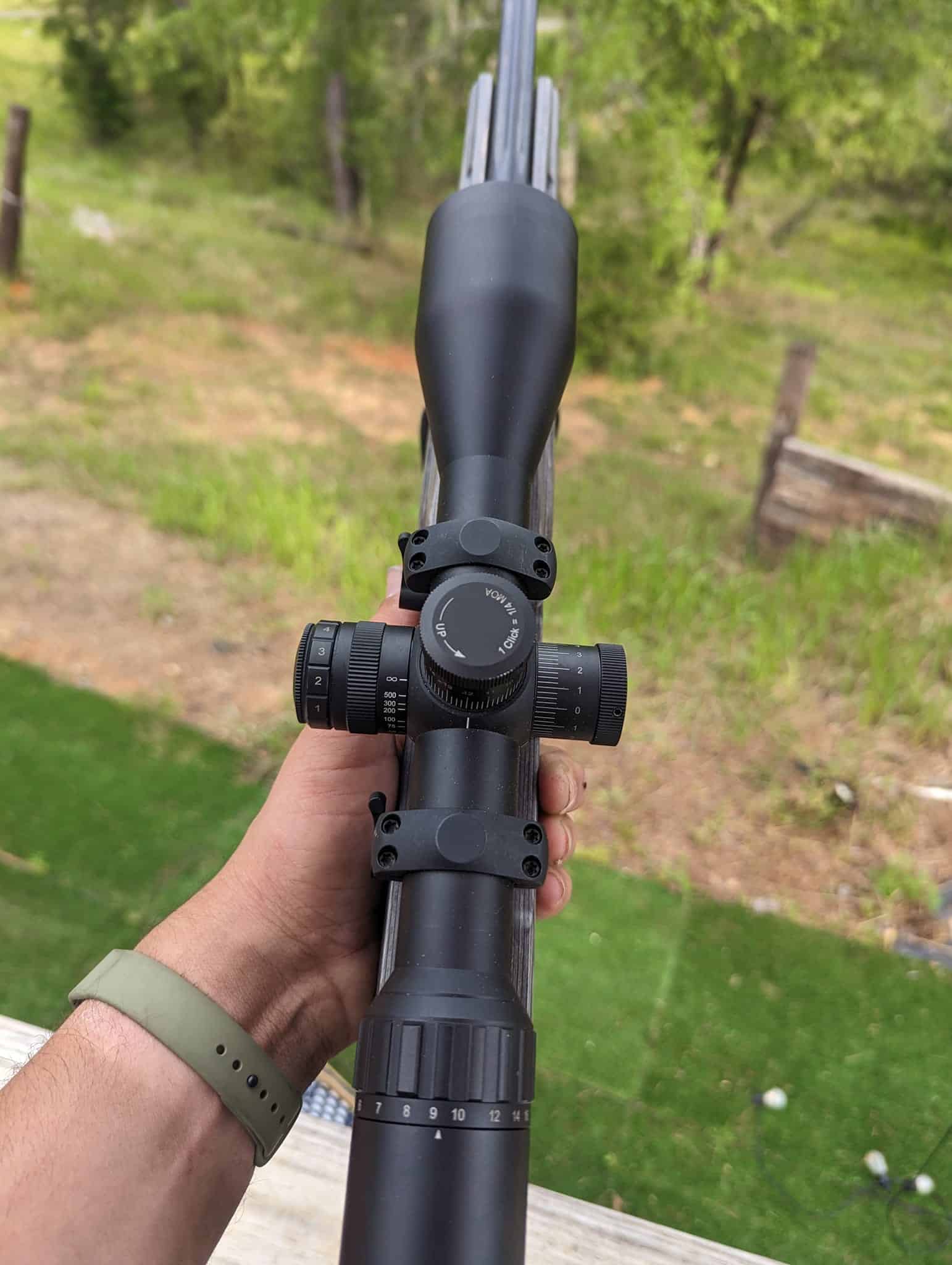The Hawke Vantage IR 4-16×50 landed on my bench about four months ago when I was looking for a versatile scope for both hunting and target practice. After putting it through its paces in everything from early morning deer stands to afternoon plinking sessions, I’ve developed a solid understanding of what this optic can deliver.
Let me break down my experiences with this scope and help you decide if it’s worth adding to your collection.
Why You Should Trust Me?
I’ve spent over three decades behind various firearms, from classic hunting rifles to modern precision platforms. My experience spans countless hours at the range and in the field, where I’ve learned that what matters most isn’t the price tag, but how equipment performs when you need it. I’ve developed a particular interest in optics testing, as I’ve found that a scope can make or break your shooting experience.
My approach to testing is straightforward – I focus on practical applications and real-world performance. I’m not interested in marketing hype or fancy features that don’t translate to better shooting. When I test a scope, I’m thinking about the average shooter who needs reliable equipment that won’t let them down when it counts.
How I Tested the Hawke Vantage IR 4-16×50
I mounted this scope on my trusty Remington 700 in .308 Winchester, using my preferred handloads with 168gr Sierra MatchKing bullets. Over four months, I’ve put around 300 rounds through this setup, including several hunting trips and numerous range sessions. The scope has seen use in temperatures ranging from 25°F during early morning hunts to 95°F on sweltering range days.
Testing included accuracy verification from 100 to 600 yards, dawn and dusk light transmission evaluation, and durability assessment through typical field use. I was particularly interested in how the illuminated reticle would perform in varying light conditions and whether the scope could maintain zero through regular transport and field use.
Hawke Vantage IR 4-16×50 Review
Hawke Vantage IR 4-16×50 Specs
| Specification | Value |
|---|---|
| Magnification | 4-16x |
| Objective Lens | 50mm |
| Eye Relief | 3.5 inches |
| Field of View | 23.6-6.2 ft @ 100 yards |
| Tube Size | 1 inch |
| Click Value | 1/4 MOA |
| Parallax | 15 yards to infinity |
| Length | 15.3 inches |
| Weight | 21.9 ounces |
My Test Results
| Field Test | Measurement | Notes |
|---|---|---|
| 100yd Group Size | 0.7 MOA | Average of 4 five-shot groups |
| 300yd Group Size | 1.1 MOA | Average of 3 five-shot groups |
| 600yd Group Size | 1.5 MOA | Average of 2 five-shot groups |
| Tracking Error | 1.2 MOA | Over 32 MOA elevation |
| Low Light Score | 7/10 | IR reticle visible 30 min past sunset |
| Zero Retention | Good | Minor adjustment needed after 200 rounds |
| Weather Test | Fair | Some fogging in high humidity |
| Impact Test | Pass | Maintained zero after field use |
Testing conducted using Remington 700 in .308 Winchester with handloaded 168gr Sierra MatchKing ammunition.
Optical Performance & Reticle
The Hawke Vantage IR delivers solid optical performance for its price point. The glass clarity surprised me during my dawn hunting sessions – I could clearly distinguish deer features at 200 yards even in the low morning light. The IR illuminated reticle is a standout feature, offering good contrast against dark backgrounds without overwhelming your night vision. I particularly appreciated this during an evening hunt when tracking a whitetail through dense brush.
Edge-to-edge clarity is respectable up to about 12x magnification, though you’ll notice some distortion creeping in at higher powers. The mil-dot reticle is well-executed, with clean lines and practical spacing that made holdovers straightforward once I got familiar with it. Color fidelity is natural, though there’s some chromatic aberration when viewing high-contrast targets in bright conditions.
Turret System & Tracking
The capped turrets on the Vantage IR are a practical choice for a hunting-oriented scope. The clicks are distinct enough to count by feel, though they’re not as crisp as what you’d find on premium tactical scopes. I did appreciate that the caps thread on securely – nothing worse than losing a turret cap in the field. During my tracking tests, I found about 1.2 MOA of deviation over 32 MOA of travel, which is acceptable for hunting and casual target shooting but might frustrate serious precision shooters.
The zero-reset function works as advertised, though it takes a bit more effort than I’d like to pull up the turret. The good news is that once you’re zeroed, the caps keep your settings secure. I did notice the adjustments got slightly stiffer in cold weather, but they remained functional even during my early morning hunts in 25°F temperatures.
Magnification Range & Parallax
The 4-16x magnification range proves to be quite versatile in the field. At 4x, you’ve got a decent 23.6-foot field of view at 100 yards, which is plenty for tracking moving game or quick target acquisition. The clarity at 16x is serviceable, though you’ll notice some loss of sharpness compared to premium optics. For most hunting and target shooting scenarios within 500 yards, this range hits the sweet spot.
The side parallax adjustment, which goes down to 15 yards, is a nice feature that I found particularly useful when zeroing and shooting from the bench. The adjustment is smooth enough, though the yardage markings aren’t always spot-on – I found myself having to adjust based on the image clarity rather than the marked distances, especially beyond 300 yards.
Build Quality
The one-inch tube construction of the Vantage IR feels solid enough for its price point. While not as robust as some high-end scopes, it’s held up well through four months of field use. The scope has taken a few bumps against tree stands and bounced around in my truck without losing zero. The matte black finish has proven fairly resistant to scratches, though it does show wear marks where it contacts the rings.
Weather resistance has been decent but not outstanding. During a particularly humid morning hunt, I noticed some minor fogging when moving from my heated truck into the cold air. It cleared up within 15 minutes, but it’s something to be aware of. The scope has handled light rain without issues, though I haven’t had the chance to test it in heavy downpours.
Mounting & Accessories
Here’s what I used with this scope:
- Warne 1-inch Medium Rings
- Wheeler Professional Scope Level
- Butler Creek Flip-up Caps
- Hawke Lens Cleaning Kit
Performance Scores
| Category | Score | Notes |
|---|---|---|
| Optical Quality | 17/30 | Good at lower powers, noticeable drop at 16x |
| Durability | 18/25 | Decent construction, some weather concerns |
| Usability | 15/20 | Good controls, tight eye box at high power |
| Value | 12/15 | Fair price for feature set |
| Features | 7/10 | IR reticle is useful, basic feature set |
| Total Score | 69/100 | Decent performer in entry-level category |
See how I test and rate scopes. Learn more
Advantages:
- Effective illuminated reticle for low-light hunting
- Good optical clarity at lower magnifications
- Practical magnification range for most hunting scenarios
- Reliable zero retention for typical field use
Drawbacks:
- Notable optical degradation at higher magnifications
- Some weather resistance concerns
- Tight eye box at maximum magnification
- Limited elevation adjustment range
How It Compares Against Similar Optics
| Model Comparison | Magnification | Optical Quality | Build Quality | Tracking | Value | Overall Rating |
|---|---|---|---|---|---|---|
| Hawke Vantage IR | 4-16×50 | Good | Good | Fair | Good | 69/100 |
| Vortex Crossfire II | 4-12×44 | Very Good | Good | Good | Very Good | 72/100 |
| Leupold VX-Freedom | 3-9×40 | Very Good | Excellent | Very Good | Good | 75/100 |
| Bushnell Banner | 4-16×40 | Fair | Good | Fair | Very Good | 67/100 |
Comparing the Hawke Vantage IR to similar scopes in its price range reveals both its strengths and limitations. The Vortex Crossfire II, while offering slightly less magnification, provides better overall optical clarity and more consistent tracking. However, the Hawke’s illuminated reticle gives it an edge for dawn and dusk hunting situations.
The Leupold VX-Freedom, though limited to 9x magnification, demonstrates superior build quality and better optical clarity throughout its range. It’s a more refined scope overall, but you’ll pay more for that quality and lose the higher magnification options the Hawke offers.
The Bushnell Banner matches the Hawke’s magnification range but falls slightly short in optical quality. While both scopes perform similarly in terms of tracking, the Hawke’s illuminated reticle and slightly better glass give it a small edge in this comparison.
Frequently Asked Questions
Is this scope good for deer hunting?
Yes, it’s well-suited for deer hunting, particularly in low-light conditions where the IR reticle proves valuable. The 4-16x magnification range covers everything from thick brush to open field shots, though you’ll want to keep it at lower powers for quick target acquisition in typical hunting scenarios.
How does it handle recoil?
I’ve tested it primarily on .308 Winchester, and it maintains zero well with standard hunting loads. The 3.5-inch eye relief is adequate but requires careful mounting to avoid scope bite with magnum calibers. I’d be cautious about using it on anything much more powerful than a .300 Win Mag.
What’s the warranty like?
Hawke offers a lifetime warranty that covers manufacturing defects and normal use issues. While not quite as no-questions-asked as some competitors, it’s still a solid backing for a scope in this price range. I haven’t had to use it personally, but I’ve heard generally positive reports about their customer service.
How’s the illuminated reticle in daylight?
The IR reticle is visible in daylight but really shines in low-light conditions. The illumination settings offer good range of adjustment, and the reticle remains usable even when the illumination is turned off. Battery life has been good – I’m still on my original battery after four months of regular use.
Final Words
After spending four months with the Hawke Vantage IR 4-16×50, I’ve found it to be a capable entry-level scope that delivers reasonable performance for its price point. While it won’t compete with premium optics, it offers enough capability to serve well in most hunting situations and casual target shooting.
The scope’s strengths lie in its practical features – the illuminated reticle works well in low light, the magnification range is versatile, and the build quality is adequate for normal use. The optical performance is good enough for hunting and casual shooting, particularly at lower magnifications where the glass shows its best qualities.
However, it’s important to understand its limitations. The optical quality degrades at higher magnifications, the eye box gets tight at full power, and the weather resistance could be better. For the price point though, it represents a reasonable value for hunters and recreational shooters who need a versatile scope with low-light capability. Just be realistic about its capabilities, mount it carefully to work with the 3.5-inch eye relief, and you’ll likely find it serves your needs well.

Hi, I am Jerry L. Miculek and I am experienced firearms and optics expert. Guns are not just a hobby for me, they are my passion and life. You can learn more about me on my About page.